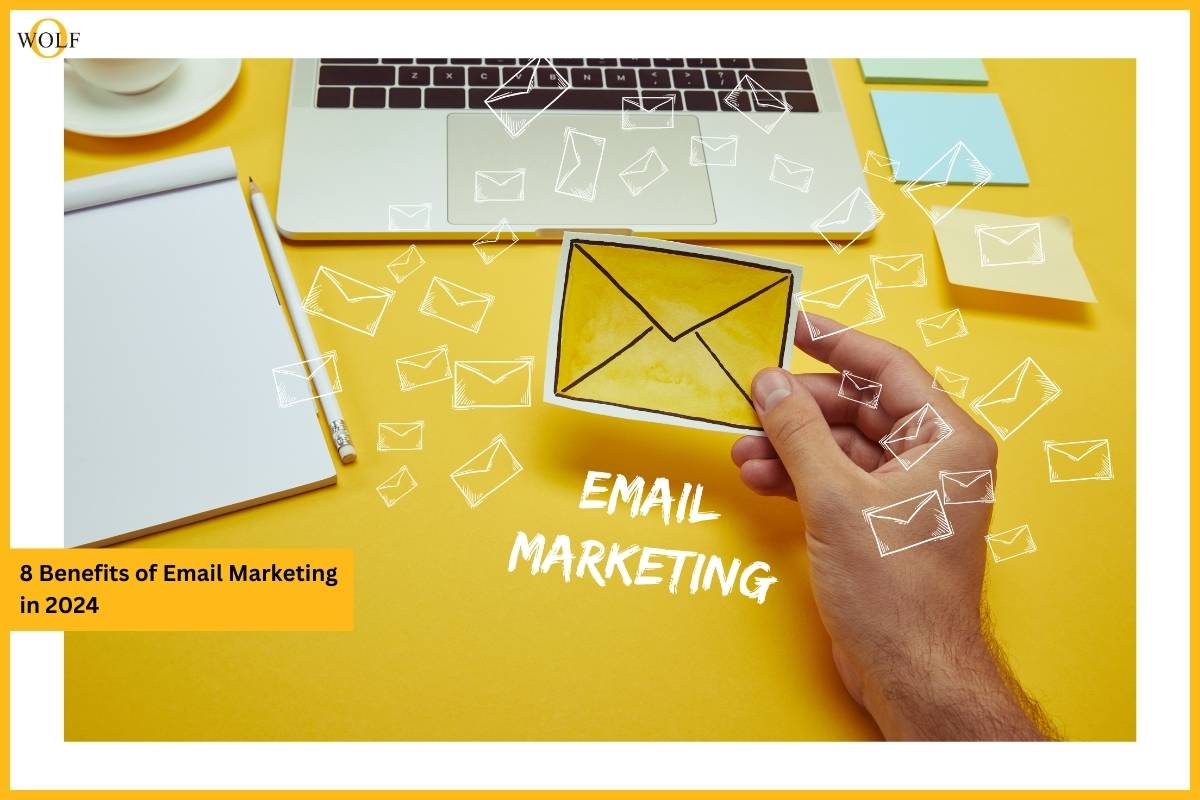Email marketing remains a cornerstone of digital marketing strategies in 2024, despite the ever-changing landscape of online communication and engagement channels. With the evolution of technology and consumer preferences, email marketing continues to prove its effectiveness in reaching and nurturing audiences. In this blog, we explore eight key benefits of email marketing in 2025, highlighting why it remains a vital tool for businesses to connect with customers, drive engagement, and achieve marketing goals.
1. Wide Reach and Accessibility
One of the primary benefits of email marketing is its ability to reach a large audience instantly. With billions of active email users globally, businesses can communicate their messages directly to subscribers’ inboxes, ensuring direct access to a vast pool of potential customers. Unlike social media or search engine algorithms, email marketing allows businesses to bypass external factors and deliver content directly to their target audience.
Key Points:
Global Reach: Access to a diverse and international audience regardless of geographical location.
Immediate Delivery: Messages are delivered instantly, allowing for timely promotions or announcements.
Accessibility: Emails can be accessed on various devices—desktops, laptops, smartphones, tablets—ensuring messages reach users wherever they are.
2. Cost-Effectiveness

The benefits of Email marketing are renowned for their cost-effectiveness compared to traditional benefits of marketing channels like print or television advertising. It eliminates printing, postage, and distribution costs associated with physical marketing materials. With email marketing platforms available at various price points, businesses of all sizes can create, send, and track email campaigns within budget constraints, making it a viable option for startups and established enterprises alike.
Key Points:
Low Overhead Costs: Minimal expenses for design, content creation, and distribution compared to traditional marketing methods.
Scalability: Easily scale email campaigns based on budget and audience size without substantial additional costs.
ROI Measurement: Comprehensive analytics and tracking tools allow businesses to measure campaign effectiveness and optimize strategies for better ROI.
3. Targeted and Personalized Communication
One of the strengths of email marketing lies in its ability to deliver targeted and personalized messages to segmented audiences. By leveraging customer data such as demographics, purchase history, and engagement behavior, businesses can tailor content to specific audience segments. Personalized emails resonate more effectively with recipients, leading to higher engagement rates, increased conversions, and improved customer loyalty.
Key Points:
Segmentation: Divide subscribers into groups based on interests, behaviors, or demographics to deliver relevant content.
Dynamic Content: Customize email content dynamically based on recipient data, enhancing relevance and engagement.
Behavioral Triggers: Send automated emails triggered by specific actions, such as abandoned carts or subscription renewals, to nurture leads and drive conversions.
4. Drive Traffic and Conversions
The benefits of Email marketing play a crucial role in driving traffic to websites, landing pages, and online stores. By including compelling calls-to-action (CTAs) and relevant links in emails, businesses can direct recipients to specific destinations where they can take desired actions, such as making a purchase, signing up for a webinar, or downloading content. Well-crafted email campaigns can significantly impact website traffic and conversion rates, making them an essential component of digital marketing strategies.
Key Points:
CTA Optimization: Strategically place CTAs to encourage recipients to click through and take action.
Conversion Funnels: Guide subscribers through conversion funnels with targeted emails that move them closer to making a purchase or engaging further with the brand.
Measure Impact: Track click-through rates (CTRs), conversion rates, and other metrics to assess campaign performance and optimize for better results.
5. Build and Nurture Customer Relationships

Effective benefits of email marketing go beyond promotional messages; they foster meaningful relationships with customers. By delivering valuable content, updates, and exclusive offers directly to subscribers’ inboxes, businesses can establish trust, credibility, and loyalty over time. Regular communication through newsletters, personalized greetings, and follow-up emails helps businesses stay top-of-mind with customers, leading to repeat purchases and advocacy.
Key Points:
Customer Engagement: Engage with subscribers through relevant content, industry insights, and educational resources.
Brand Loyalty: Strengthen connections and build loyalty by consistently delivering value and meeting customer expectations.
Feedback and Interaction: Encourage feedback and interaction through surveys, polls, and personalized communications to understand customer preferences and improve services.
6. Measurable Results and Analytics
One of the significant benefits of email marketing is its ability to provide detailed analytics and measurable results. Modern email marketing platforms offer robust analytics tools that track various metrics such as open rates, click-through rates, conversion rates, bounce rates, and more. This data provides valuable insights into campaign performance, audience behavior, and areas for optimization, enabling businesses to make informed decisions and refine their strategies for better outcomes.
Key Points:
Real-time Reporting: Access to real-time data and analytics allows marketers to monitor campaign performance as it happens.
A/B Testing: Conduct A/B tests on subject lines, content, CTAs, and send times to optimize email effectiveness based on data-driven insights.
ROI Calculation: Calculate the return on investment (ROI) of email marketing campaigns based on revenue generated versus costs incurred.
7. Automation and Efficiency
Automation has revolutionized email marketing by streamlining processes, improving efficiency, and enhancing customer experiences. Automation tools allow businesses to set up drip campaigns, welcome series, transactional emails, and personalized workflows based on predefined triggers or user actions. This not only saves time and resources but also ensures timely and relevant communication with subscribers throughout their customer journey.
Key Points:
Workflow Automation: Automate repetitive tasks such as welcome emails, birthday greetings, and post-purchase follow-ups.
Lead Nurturing: Use automated drip campaigns to nurture leads over time and move them through the sales funnel.
Personalization at Scale: Deliver personalized content and recommendations automatically based on subscriber behavior and preferences.
8. Adaptability and Integration

Email marketing is highly adaptable and integrates seamlessly with other digital marketing channels and strategies. Whether as part of a comprehensive multichannel campaign or standalone efforts, email marketing complements social media marketing, content marketing, SEO, and paid advertising initiatives. Integrating email with CRM systems, e-commerce platforms, and analytics tools enhances data synchronization, audience segmentation, and campaign performance tracking.
Key Points:
Multichannel Integration: Coordinate email campaigns with social media posts, blog content, and other marketing activities to reinforce messaging and maximize reach.
Cross-promotion: Use email to drive traffic to social media channels and vice versa, creating a cohesive brand experience.
Data Synchronization: Ensure seamless integration between email marketing platforms and CRM systems to maintain accurate customer records and segmentation.
Conclusion
In conclusion, email marketing remains a potent tool for businesses seeking to engage customers, drive conversions, and achieve marketing objectives in 2024. From its wide reach and cost-effectiveness to its ability to deliver personalized experiences, build customer relationships, and provide measurable results—email marketing continues to evolve and adapt alongside advancements in technology and consumer preferences.
By leveraging the benefits of email marketing—such as targeted communication, automation, analytics, and integration—businesses can effectively navigate the digital landscape, connect with their audience on a deeper level, and ultimately, drive sustainable growth and success in the competitive marketplace of 2025 and beyond. Embrace these benefits of email marketing, optimize your strategies, and harness the power of email marketing to propel your business forward in the digital age.
Did you find this article helpful? Visit more of our blogs! : Business Wolf Magazine






